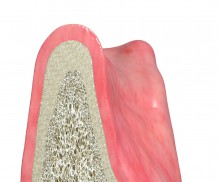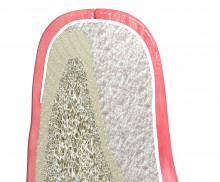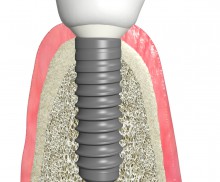Guided Bone Regeneration
|

Small horizontal defects, in particular defects inside the ridge contour, can predictably be treated with many kind of bone substitute materials. maxresorb® is a biphasic material composed of 60% hydroxyapatite and 40% beta-tricalcium phosphate. While the fast resorption of beta-TCP quickly offers space for new bone formation, the HA component provides volume stability for an extended time period, ensuring treatment success also in case of a two-stage procedure (delayed implantation). Of course, the bovine material cerabone® may also be applied. Due to its natural bone structure cerabone® provides optimal support for bone forming cells and blood vessels. A further alternative are the the allogenic maxgraft® granules.
Collagen membranes are very widely used, due to inherent advantagous properties of collagen. Collagen exhibits an excellent biocompatibility and controlled, complete degradation together with a natural hemostatic activity and chemotactic attraction of fibroblasts and osteoblasts. The desirable barrier function largely depends on the indication; for smaller augmentative procedures the collprotect® membrane, which has an intermediate barrier function is the optimal choice. Of course the pericardium membrane, Jason® membrane, which offers a significantly longer barrier function, may also be applied.
Please Contact us for Literature.
























